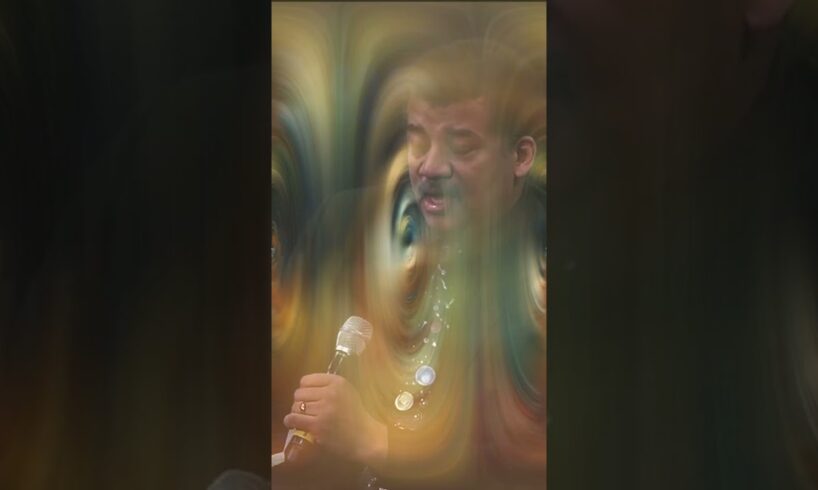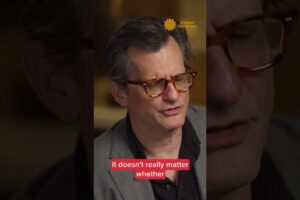
Neil deGrasse Tyson has expressed skepticism about near-death experiences (NDEs). He approaches such experiences from a scientific perspective, often highlighting how they can be explained by brain activity under extreme stress or trauma rather than as evidence of an afterlife or spiritual phenomenon. Tyson emphasizes the importance of distinguishing personal experiences and subjective truths from objective scientific facts.
source







I love this man always tell the truth, people with near death experience hallucinated becaus consciousness is an illusion and I know they get paid for manipulate people like religion. On day science gonna win thank Neil de grass Tyson
Science, man’s never ending pursuit to understand the Creator’s work.
So 300 million people who have had glimpses into the afterlife🤨(I think at least) if I tell you that my friend killed someone you wouldn’t believe me, now If 10 other people told you that my friend killed someone you wouldn’t think I was lying would you? So why do the same for near death experiences it’s pretty clear that Ndes can be established as a objective truth that consciousness continues after death
Boy lost in the 3D
There are almost no objective truths in science! Everything is a theory because science can't prove anything.
It a delusion on their part? You can do what you want with it but it’s only a delusion
Science is man's measuring stick to God's work
You can buy or influence scientists
Science of the study of things so mundane it doesn’t matter who saw what or when.
Like the Covid jab….objective truth? Pass….science isn’t always right Jack.
Research into near-death experiences (NDEs) and reincarnation has been explored by numerous scientists combining psychology, neuroscience, and quantum physics.
Key figures in the field include:
1. Raymond Moody – Coined "near-death experience" in his book "Life After Life," identifying common NDE elements like peace, tunnel vision, and out-of-body experiences.
2. Bruce Greyson – Developed the Near-Death Experience Scale to analyze these experiences.
3. Kenneth Ring – Authored "Life at Death," providing detailed analyses and case studies of NDEs.
4. Peter Fenwick – Researched the brain's role in NDEs and OBEs, exploring consciousness implications.
5. Stuart Hameroff & Roger Penrose – Proposed the Orch-OR theory linking quantum processes to consciousness.
6. Pim van Lommel – Conducted studies on NDEs in cardiac arrest patients, supporting continuous consciousness.
David Bohm's work in quantum physics and the holographic model suggests the universe might be understood as a giant hologram, impacting theories on consciousness and NDEs.
In reincarnation research:
1. Ian Stevenson at the University of Virginia documented thousands of cases of children recalling past lives, verified through historical records and physical marks corresponding to past-life injuries.
2. Jim Tucker continued Stevenson's work, focusing on American cases and exploring reincarnation through quantum physics.
3. Ervin Laszlo explored the Akashic field, suggesting the universe's information field could explain reincarnation.
4. Brian Weiss provided anecdotal evidence supporting reincarnation through past-life regression therapy.
These researchers' work combines empirical data with theoretical models to understand NDEs and reincarnation. For more detailed studies, refer to:
– "Life After Life" by Raymond Moody
– "Return to Life" by Jim Tucker
– Journal of Near-Death Studies
More reading:
– [The Science of Reincarnation—VIRGINIA Magazine](https://uvamagazine.org/articles/the_science_of_reincarnation)
– [Evaluating the Evidence for Reincarnation | Psychology Today](https://www.psychologytoday.com/us/blog/out-the-darkness/202112/evaluating-the-evidence-reincarnation)
– [Division of Perceptual Studies – University of Virginia School of Medicine](https://med.virginia.edu/perceptual-studies/)
– [Jim B. Tucker – Wikipedia](https://en.wikipedia.org/wiki/Jim_B._Tucker)
– [Jim Tucker – Division of Perceptual Studies](https://med.virginia.edu/perceptual-studies/dops-staff/jim-tucker/)
🙏🏼